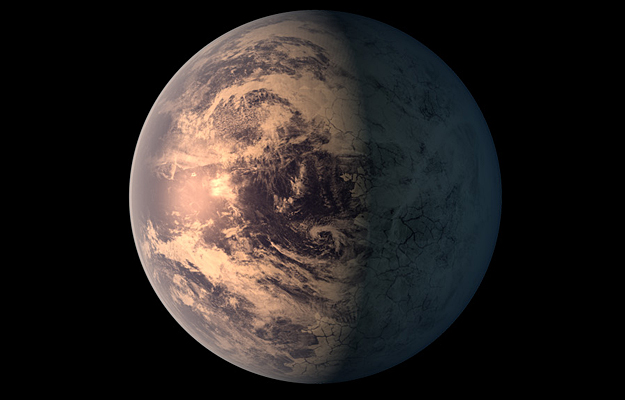Albedos, Equilibrium Temperatures, and Surface Temperatures of Habitable Planets

The potential habitability of known exoplanets is often categorized by a nominal equilibrium temperature assuming a Bond albedo of either 0.3, similar to Earth, or 0.
As an indicator of habitability, this leaves much to be desired, because albedo on other planets can be very different, and because surface temperature exceeds equilibrium temperature due to the atmospheric greenhouse effect. We use an ensemble of 3-dimensional general circulation model simulations to show that for a range of habitable planets, much of the variability of Bond albedo, equilibrium temperature, and even surface temperature can be predicted with useful accuracy from incident stellar flux and stellar temperature, two known external parameters for every confirmed exoplanet.
Anthony D. Del Genio, Nancy Y. Kiang, Michael J. Way, David S. Amundsen, Linda E. Sohl, Yuka Fujii, Mark Chandler, Igor Aleinov, Christopher M. Colose, Scott D. Guzewich, Maxwell Kelley
(Submitted on 17 Dec 2018)
Comments: 45 pages including 8 figures, 5 tables; submitted to The Astrophysical Journal
Subjects: Earth and Planetary Astrophysics (astro-ph.EP)
Cite as: arXiv:1812.06606 [astro-ph.EP] (or arXiv:1812.06606v1 [astro-ph.EP] for this version)
Submission history
From: Anthony Del Genio
[v1] Mon, 17 Dec 2018 04:03:11 UTC (5,762 KB)
https://arxiv.org/abs/1812.06606
Astrobiology
Walking Through an Exploded Star: Rendering Supernova Remnant Cassiopeia A into Virtual Reality
Kimberly K. Arcand, Elaine Jiang, Sara Price, Megan Watzke, Tom Sgouros, Peter Edmonds
(Submitted on 15 Dec 2018)
NASA and other astrophysical data of the Cassiopeia A supernova remnant have been rendered into a three-dimensional virtual reality (VR) and augmented reality (AR) program, the first of its kind. This data-driven experience of a supernova remnant allows viewers to walk inside the leftovers from the explosion of a massive star, select the parts of the supernova remnant to engage with, and access descriptive texts on what the materials are. The basis of this program is a unique 3D model of the 340-year old remains of a stellar explosion, made by combining data from the NASA Chandra X-ray Observatory, Spitzer Space Telescope, and ground-based facilities. A collaboration between the Smithsonian Astrophysical Observatory and Brown University allowed the 3D astronomical data collected on Cassiopeia A to be featured in the VR/AR program, which is an innovation in digital technologies with public, education, and research-based impacts.
Comments: 20 pages, 6 figures
Subjects: Instrumentation and Methods for Astrophysics (astro-ph.IM); High Energy Astrophysical Phenomena (astro-ph.HE); Human-Computer Interaction (cs.HC)
Journal reference: Communicating Astronomy with the Public Journal Volume 1, Issue 24 (2018): 17
Cite as: arXiv:1812.06237 [astro-ph.IM] (or arXiv:1812.06237v1 [astro-ph.IM] for this version)
Submission history
From: Sara Price
[v1] Sat, 15 Dec 2018 05:29:04 UTC (1,377 KB)
https://arxiv.org/abs/1812.06237
Astrobiology








